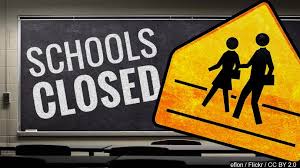“It is clear from the evidence we have collected that 1 June is simply too early to go back. By going ahead with this dangerous decision, the government is further risking the health of our communities and the likelihood of a second spike.” (Sir David King, Independent SAGE Group)

Because of misleading advice and data issued by Downing Street, renowned medical scientists decided to set up an Independent SAGE group. They have already published a general report and recommendations and begun to look at the question of reopening schools. This could help guide educators to find the right time and the best way to move forward.
In a crisis, hide the bodies
The Coronavirus crisis in England has been marked by false data and various attempts to make the risks seem minimal.
Initially, official figures only included hospital deaths. This was exposed by the Financial Times comparison of total deaths with seasonal averages in previous years. The EuroMOMO database shows that deaths in England remain very high and have not sunk to the same extent as other Western European countries (see our earlier post).

Now, it seems, only people tested in hospitals are appearing in local and regional statistics of new infections. This is creating the impression that there are very few new infections in specific regions. For example, official tables of geographical distribution showed around 50 new cases in London or the North East each day last week. But when you add all the English regions together, the total doesn’t come anywhere near the UK-wide figure on the summary page. Around three quarters of cases are missing from the local and regional figures. This is because the regional figures don’t include the commercial labs which process tests from the local test centres outside of hospitals. This means that infections among nurses, care assistants and other high-risk workers aren’t counted in the local and regional figures. It is not surprising that some major newspapers are suggesting the crisis is over.
The picture that emerges from more complete data supplied to the World Health Organisation (WHO) shows the crisis is far from over. The WHO is showing around 3000 new cases a day for the UK. Since England has 84% of the total UK population, this suggests around 2500 new confirmed cases across England every day.
Should schools reopen on 1 June?

The medical experts in Independent SAGE called a meeting on Friday 22 May to discuss this question with interested parties such as parents and trade unions. Their draft report was supplemented by advice from experienced education researchers.
Professor David King concluded that there is almost zero chance of conditions being reached for a safe reopening of schools on 1 June. The report makes clear that decisions on school opening should depend on low levels of infections in the community and the capacity to respond quickly to new infections through a local test, track and isolate strategy.
“There is no clear evidence that these conditions are met. Until they are it is not safe to open schools on June 1.”
Although children are less likely to get ill than adults, they could still infect others. Even the DfE advice is cautious:
“Some studies suggest younger children may transmit less, but this evidence is mixed and provides a low degree of confidence at best.”
So a child carrying the infection but not showing symptoms could spread it unnoticed to other children and staff, and it could then reach family members with existing medical problems as well as older relatives.
Much of the discussion was about disadvantage. The report stresses the need to ensure parents and children are well fed. “Provision of midday meals for vulnerable children out of school and during the summer months is essential.” Rather than rushing to reopen schools, it suggests better provision of computer equipment and distance learning, as well as summer activity schemes including educational “catch up”. (Infection is far less likely out of doors.)

Putting children first
The education researchers point out the need to take a rounded view of children’s needs, not just getting children back behind desks.
Prime are children’s social, emotional and wider development needs. One could imagine a completely social distancing school that ends up creating an environment that could be emotionally harmful for children. Stories of nurseries and reception classes removing all toys prior to re-opening are unlikely to create a rich learning environment and might otherwise create harm.
Careful thought has to be given to the main purpose of re-opening.
The needs of the child should be at the centre of concern. This could mean, for example, that physical activity, exploring the natural environment, dance or drama has higher priority than academic learning. The facility for children to play and learn with a small group of friends may outweigh the desirability of strict physical distancing.
The Government instruction to get the youngest children back first was questioned:
Children of this age are too young to sit at desks and be lectured from the front of the class, and the practice would be unsuitable and quite alien to them… The unsuitability of the practice is such that it would be better for the children’s mental health to continue to remain at home. It should also be remembered that, in most nations in the world, the school starting age is 6 or 7 so very few children of this age are actually in school. As such, it seems highly illogical to insist that there is a greater urgency for them to return to school than for older age groups.

The particular difficulties of English secondary schools were highlighted, including movement of children to different sets and subject options. In this respect, English secondary schools are worse placed than in many European countries where there is less setting or streaming and a common curriculum to age 16.
In secondary schools, different curricular arrangements may be needed to keep children within the same group of 10-15 throughout the week rather than shuffling between multiple teachers and classes. For example, a week’s curriculum (perhaps mornings only) could be focused on a single major subject or an interdisciplinary project, complemented by distance learning provided by other subject specialists.
Also, classes are larger in primary and secondary schools than many European countries. It is no easy matter to find enough teachers for classes of 10-15 pupils, and a mix of school attendance and home learning is almost inevitable.
Other suggestions include:
-
- When engaged in academic learning, it will be crucial to engage children’s interest and avoid undue pressures. National testing should be halted to prevent that pressure filtering down to individual teachers and their pupils.
- Children in need of tutorial support should receive that help, and additional advice and support should be given to parents.
These discussions will continue over coming weeks and months to find ways forward which keep people safe and benefit children socially and educationally.



































